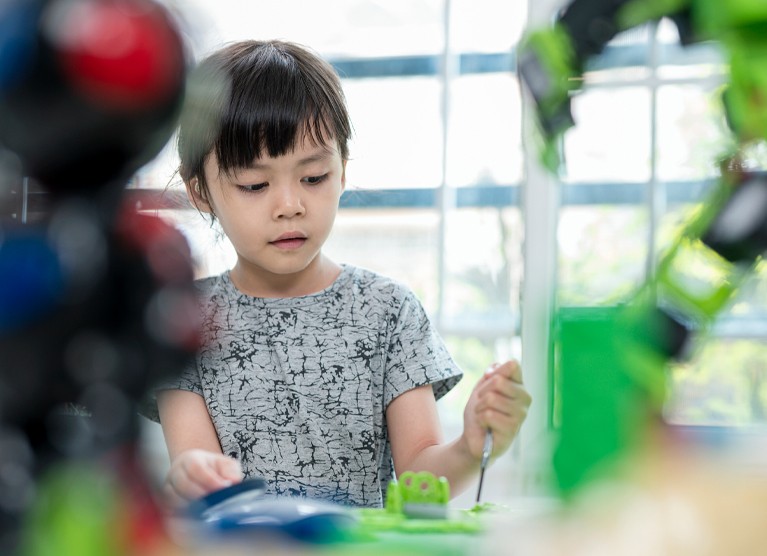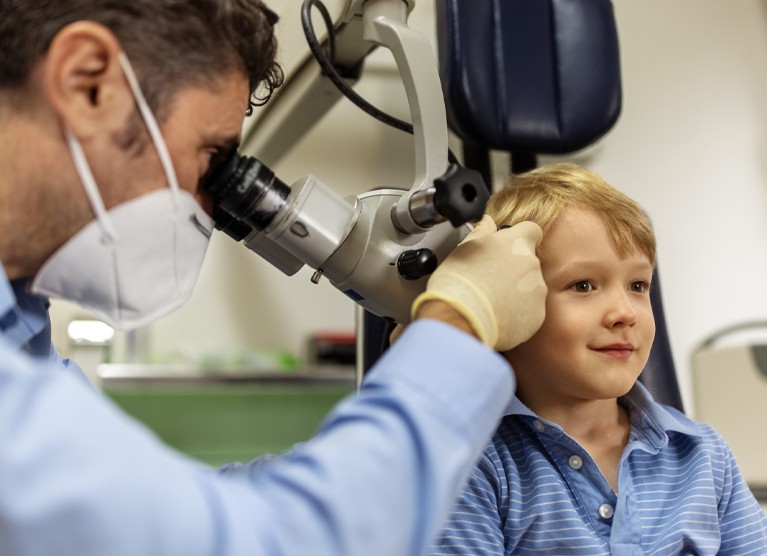Hearing Loss in Children: Signs, Causes, and Treatments
Hearing is one of a child’s essential tools for learning about the world—speech, language, social interaction, and even safety depend heavily on hearing. Early detection, informed care, and family support make all the difference.
Below is what parents and caregivers need to know: how to spot hearing loss, what causes it, and what treatments and strategies are available.
Recognizing the Signs: When to Be Concerned
Hearing loss in children doesn’t always show up in dramatic ways. Sometimes the clues are subtle, and other times they appear gradually. Being alert early can make a big difference.
Here are warning signs by age group:
| Age / Stage | What to Watch For |
|---|---|
| Infants (0–12 months) |
|
| Toddlers / Preschoolers |
|
| School-aged Children |
|
If you observe one or more of these in your child, especially over time, it’s worth talking with a pediatrician or hearing specialist. Early detection gives more options and typically better outcomes.
What Causes Hearing Loss in Children
Hearing loss can be congenital (present at birth) or acquired (after birth). It may be temporary or permanent; it may affect one ear or both. Understanding causes helps with prevention, diagnosis, and treatment planning.
Congenital Causes
- Genetics: Many cases are due to inherited genes—some syndromic (associated with other health or developmental issues), some non-syndromic.
- Infections during pregnancy: For example, rubella, cytomegalovirus (CMV), syphilis, herpes, or toxoplasmosis.
- Birth complications: Prematurity, low birth weight, lack of oxygen (hypoxia), problems with bilirubin levels, etc.
- Structural anomalies: Malformation of the outer, middle, or inner ear.
Acquired Causes
- Ear infections & fluid buildup: Middle ear infections (otitis media) can cause conductive hearing loss while fluid is present.
- Noise exposure: Extended or repeated exposure to loud sounds from toys, headphones, or environmental sources.
- Infections after birth: Meningitis, mumps, measles, and other viral or bacterial infections.
- Ototoxic medications: Some medicines can damage hearing, particularly in young children or at high doses.
- Trauma / injury: Head injuries, foreign objects in the ear, etc.

Types of Hearing Loss
- Conductive Hearing Loss: Something blocking or impairing the outer or middle ear (e.g., fluid, earwax, structural issues). Often treatable and sometimes temporary.
- Sensorineural Hearing Loss: Damage to the inner ear (cochlea) or auditory nerve. More likely to be permanent.
- Mixed: Both conductive and sensorineural components.
Diagnosis: What Happens First
- Newborn hearing screening: Many places screen every baby shortly after birth as part of Early Hearing Detection and Intervention (EHDI).
- Follow-up with specialists: If the screen shows possible problems, audiologic testing is done—behavioral audiometry, otoacoustic emissions (OAEs), auditory brainstem response (ABR), etc.
- Medical evaluation: To identify medical causes (infection, fluid, anatomy) and whether surgery or medications are needed.
- Speech, language, developmental assessment: To evaluate how hearing loss affects learning and social development.
Treatment & Intervention Options
There is no one-size-fits-all solution. Treatment depends on type and severity of hearing loss, the child’s age, overall health, and family preferences. The sooner intervention begins, the better.
Conductive Loss Treatment
- Medical treatment: Treat infections, clear fluid, manage allergies.
- Surgery / Procedures: Ear tubes (tympanostomy) to drain middle ear fluid; repair of structural abnormalities.
- Assistive devices: Hearing aids or bone conduction devices may help during or after medical treatment.
Sensorineural Loss Treatment
- Hearing aids: Amplify sound; modern digital devices are adjustable and can be tuned to a child's hearing profile.
- Cochlear implants: For children with severe-to-profound sensorineural loss who do not get sufficient benefit from hearing aids.
- Bone-anchored devices / Implantable options: For specific anatomical or mixed-loss situations.
Additional Support & Therapy
- Early Intervention Programs: Critical for children under age 3; focus on speech, language, social skills, and auditory training.
- Speech-Language Therapy: Helps children learn expressive and receptive language skills.
- Educational supports: Preferential seating, FM systems, classroom assistive devices, and improving acoustics.
- Family involvement and counseling: Educating caregivers and supporting communication strategies at home.
Prevention & Best Practices
While not all hearing loss can be prevented, many cases are avoidable or lessened with these steps:
- Ensure newborns receive screening and follow up on any concerns.
- Keep up with recommended vaccinations (e.g., measles, mumps, rubella, pneumococcus).
- Be cautious with medications that may be ototoxic—follow medical guidance.
- Protect children’s ears from loud noise: limit headphone volume and use hearing protection when appropriate.
- Recognize and treat ear infections promptly.
- Ensure good prenatal care—manage infections and maternal health.

Why Early Detection Matters
Undiagnosed hearing loss can delay speech, language, reading, and social-emotional development. The brain’s plasticity is greatest in the first months and years of life. Children who receive intervention before about 6 months of age typically have much better long-term outcomes in communication, academics, and social engagement than those identified later.
What You Can Do Next
- Schedule a hearing screening or an audiologic evaluation.
- Keep a log of observed signs: what you notice, when it happens, and under what circumstances.
- Explore treatment and support options; consider second opinions if needed.
- Engage with speech/language therapy and educational supports as soon as they are recommended.
Remember: Hearing loss in children is a serious issue—but early recognition and timely care enable most children to grow, learn, and thrive.
Sources
For more information, consult reputable health and professional organizations. Example sources include:
- “Hearing Loss in Children,” American Speech-Language-Hearing Association (ASHA)
- “Signs of Hearing Loss in Children,” Cochlear
- “Hearing Loss,” Boston Children’s Hospital
- “Hearing Loss in Children,” Johns Hopkins Medicine
- “Hearing Loss in Kids: Signs, Risks, and Prevention,” University of Utah Health
- “Hearing Loss in Children,” Children’s Hospital of Philadelphia
- “Hearing Loss in Children: Treatment And Intervention for Hearing Loss,” CDC
If you have concerns about a child's hearing, contact a pediatrician or an audiology clinic for an evaluation. This article is informational and not a substitute for professional medical advice.

Take Online Hearing Test
Take our free at-home hearing loss test as a first step on your journey to better hearing.


